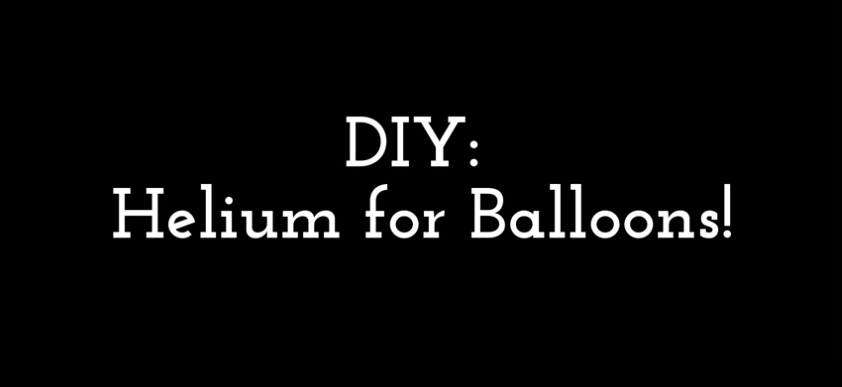There are some articles and videos circling the web that promote how to make your own helium for filling balloons. But can you make your own helium at home? Let’s get the facts straight.
Go do a quick search of “make your own helium” in Google and you’ll see pages upon pages of results.
(Go ahead, we’ll wait…)
Back? All of those articles and videos call for vinegar, baking soda (grade school volcano, anyone?), a bottle, a funnel, and your balloons. However, what these posts are actually showing is not how to make your own helium, but a simple method for producing carbon dioxide (CO2).
This reaction will fill the balloon as the gas escapes from the bottle, but will it float it?
Carbon dioxide is heavier than air, so the baking soda/vinegar balloon will actually fall to the ground much faster than it would if you simply blew it up with your mouth. You need a gas that is lighter than air to float the balloon, which is why we use helium.
Helium is the result of the very long, very slow decay of radioactive atoms like uranium. The alpha particles that are emitted from the decaying atom bond with loose electrons underground, producing helium atoms. Currently, this natural process is the only method with which helium is produced on Earth.
In other words: You cannot make your own helium! (Unless you happen to be a star, but stars can’t read blogs.)
If you cannot get your hands on helium but absolutely need to make a balloon float, for some bizarre reason, you can do it using a handful of hardware store materials. WE WARN YOU NOW: This technique involves a chemical reaction that is potentially dangerous and we advise you never to try this unless you’re a trained chemist in a controlled environment or your life depends on whether or not you can make a balloon float without using helium.
The process requires a bottle, zinc-based (post-1982) pennies, and hydrochloric acid. The zinc reacts with the acid to create hydrogen gas, which is lighter than air and will float the balloon. (Hydrogen is also highly combustible. It was the gas formerly used in the earliest airships and is responsible for the most notorious airship disaster of all time.)
We’ll show you the video, but don’t try this. Just get some helium and enjoy the fact that this guy made this for us to watch. And the next time you see someone share a post about making your own helium balloons, you’ll be equipped with the science to kindly educate them on the subject. 🙂


